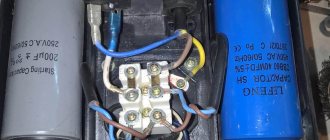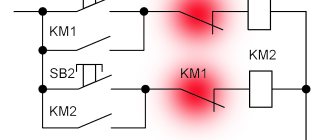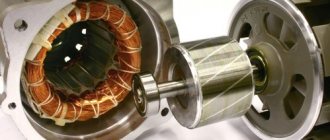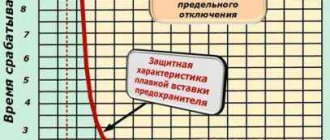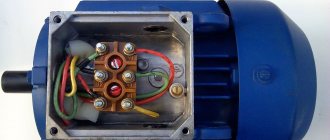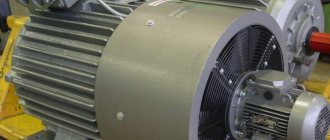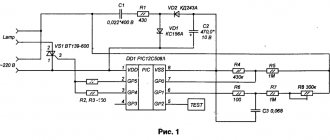Fuse groups
One of the means of protecting household appliances and equipment, as well as cables and wires, are fuses or fuses. They provide reliable protection against power surges and short circuits. There are various designs and types of these devices, designed for any current.
Until recently, fuses were inserted into plugs and were the only protection for an apartment or private house. In modern conditions, they have been replaced by more reliable reusable protective devices - circuit breakers. However, fuses have not lost their relevance today. They are installed in various devices and cars, protecting devices and electrical equipment from any negative consequences.
Fuses are divided into the following main groups:
- General purpose
- Fast acting
- Security semiconductor devices
- For transformer protection
- Low voltage
In order to make correct calculations and determine which fuse links are needed, it is recommended to take into account all the main parameters on which the fuse characteristics depend.
The main indicator is the rated current, the value of which is related to geometric and thermophysical parameters. At the same time, the power loss and excess temperature at the terminals are taken into account. The total current for the fuse depends on the rated current of the fuse link. The value of the rated current for the base is determined by the same indicator of the fuse insert installed in the fuse.
Selecting the diameter of the fuse wire
As written above, to repair a fuse, it is necessary to replace the burnt wire with one similar to the one that was in the fuse before it burned out.
Factory fuses use wires made of various metals: silver, copper, aluminum, tin, lead, nickel, etc. At home, it is unlikely that we will be able to determine the material of the wire of a blown fuse, and we also have ordinary copper wire at hand. But just in case, we present a table of wire diameters depending on the rated current of the fuse, containing, in addition to copper, aluminum, steel and tin.
| Fuse current, A | 0,25 | 0,5 | 1,0 | 2,0 | 3,0 | 5,0 | 7,0 | 10,0 | |
| Wire diameter, mm | Copper | 0,02 | 0,03 | 0,05 | 0,09 | 0,11 | 0,16 | 0,20 | 0,25 |
| Aluminum | — | — | 0,07 | 0,10 | 0,14 | 0,19 | 0,25 | 0,30 | |
| Iron | — | — | 0,13 | 0,20 | 0,25 | 0,35 | 0,45 | 0,55 | |
| Tin | — | — | 0,18 | 0,28 | 0,38 | 0,53 | 0,66 | 0,85 | |
| Fuse current, A | 15,0 | 20,0 | 25,0 | 30,0 | 35,0 | 40,0 | 45,0 | 50,0 | |
| Wire diameter, mm | Copper | 0,33 | 0,40 | 0,46 | 0,52 | 0,58 | 0,63 | 0,68 | 0,73 |
| Aluminum | 0,40 | 0,48 | 0,56 | 0,64 | 0,70 | 0,77 | 0,83 | 0,89 | |
| Iron | 0,72 | 0,87 | 1,00 | 1,15 | 1,26 | 1,38 | 1,50 | 1,60 | |
| Tin | 1,02 | 1,33 | 1,56 | 1,77 | 1,95 | 2,14 | 2,30 | 2,45 | |
Operating principle of fuses
The principle of operation of disposable protective devices is very simple. Inside each of them there is a calibrated wire connecting the contacts. If the current value does not exceed the maximum permissible norms, it heats up to approximately 70 degrees. When the electric current exceeds the set rating, the heating of the wire increases significantly. At a certain temperature it begins to melt, resulting in a break in the electrical circuit. Wiring burnout occurs almost instantly. Because of this, fuses got their name - fuse link.
In different designs, the fuse link is selected in such a way that operation occurs at the set current value. During operation, fuses periodically fail and must be replaced. As a rule, they are not repaired, but many home craftsmen quite successfully restore them.
Since only the wire itself burns out, but the body remains intact, it is necessary to replace it and the device will continue to perform its functions. New technical characteristics are often not only not inferior to the old device, but also in many ways superior to it, since the quality of hand assembly is always higher than the factory one. The main condition is the correct choice of conductor material and calculation of its cross-section.
Selection of fuses based on motor starting type
Based on frequency and starting time, asynchronous electric motors are divided into two types:
- Units with easy starting (in pumps, metal-cutting machines, fans). They start quite rarely (no more than 15 times in 1 hour), the start-up process takes from 3 to 5 seconds.
- Units with heavy starting (in ball mills, centrifuges, cranes). They start more often (15 times in 1 hour) and the start lasts 10 seconds or more. For this type of engine, burnout of the insert during startup is unacceptable.
To calculate the rated current of the insert, the value of the motor starting current is divided by the starting conditions coefficient. The first value is determined using measurements, according to a catalog or passport. The second value is 2.5 for mechanisms with easy starting and from 1.6 to 2 for mechanisms with heavy starting.
It is important to first accurately determine the start-up time and measure the voltage at the inputs of the mechanism at the time of start-up, since false burnout of the insert is possible during nominal operation of the unit due to its oxidation and heating (as a result - a reduction in the cross-section and deterioration of the condition of the contacts).
Burning out of the insert during startup leads to the fact that the engine begins to operate in two phases and quickly breaks down. Therefore, if the level of sensitivity of the mechanism to short circuit allows, you need to choose inserts that are coarser than those based on the calculation results. Each engine requires a separate protection device. Installation of a common apparatus for several engines is permitted subject to the following conditions:
- low-power mechanisms;
- Overload protection devices and starting devices with sufficient thermal stability are installed in the circuit of each motor.
General calculation rules
In order to make the correct calculation of fuse links, it is necessary to take into account the rated voltage. This value should be such that the fuse switches off the electrical circuit. The main indicator is the minimum voltage provided for the base and fuse-link.
Another important indicator that should be taken into account in the calculations is the shutdown voltage. This parameter is the instantaneous value of the voltage that appears after the fuse or fuse link itself has tripped. As a rule, the maximum value of this voltage is taken into account.
Fuse ratings are approximate
The fuse rating on the microwave is about 12 A (2 kW). The fuse rating in the computer power supply is 400 W - 2.5 A, 600 W-4, 800 W - 5 A.
In general, you can roughly calculate the fuse based on the power of the consumed device. That is, we divide the power by the voltage and get the current. It is this current with a small margin that will become the rating of our fuse. You must understand that even a fuse for protection has a small power reserve of about 10 percent. This is due to inrush induction currents passing through the inductance and when charging large capacitors.
How to choose
You should buy fuses for your car only from trusted manufacturers. There are often cases when poor quality fuses melted the insulation of the circuit wires, the seat in the mounting block, but did not burn out themselves. Most likely, the insert will melt during the combustion process of the car. If we talk about companies that have proven themselves in practice, we can highlight AVAR and TESLA fuses.
If you are not sure of the quality of the purchased products, check 1-2 fuse links, specifically passing a current through them at which they should burn out. For the test, you need to assemble a circuit with an electrical appliance whose consumption is greater than the rated current of the fuse. The amount of current in the circuit can be calculated using the formula: I=P/U, where
- P – consumer power;
- U – network voltage.
Fuse link calculator
To protect electrical circuits from emergency operating conditions, such as increased power consumption or short circuit, fuses or fuses are used.
They are designed in such a way that when current flows to a certain level, nothing happens, but, according to the Joule-Lenz law, when electric current flows, heat is released on the conductor. Therefore, at a certain current strength, such an amount of heat is released that the conductor of the fuse link simply burns out. In electronic circuits, fuses are installed at the power input; they are needed to protect the transformer, board tracks and other components. Also used to protect the electric motor - they are often installed in the switchboards to which the connection occurs. For example, when the rotor of an electric motor is jammed, an increased current will flow in the stator circuit (and the rotor too, for DPTs, and motors with phase-wound rotor), which will burn the fuse. But if its value is set too high, then the windings of the electrical machine will burn out.
In addition to the conductor itself, the fuse consists of a glass or ceramic housing, and for high powers and voltages, the housing is filled inside with dielectric powder material - this is necessary to extinguish the arc that occurs when the fuse link burns out.
It would seem to be a simple device and principle of operation, but to calculate it you need to use a number of formulas, which significantly complicates the task. Although you can avoid them if you use our online calculator, which calculates the fuse link:
Let's figure out how to calculate the diameter of the wire. First, determine the In consumption of the protected device. It can be found out from the technical documentation, for electric motors - read on the nameplate or determined by the power of the device. If the parameter is not specified, determine it using the formula:
Inom=P/U
After this, calculations are made using the current multiplied by the safety factor, which is 1.2-2.0, depending on the type of load and its characteristics. Given a thin wire of a certain diameter, melting I is calculated:
For wire diameters from 0.02 to 0.2 mm:
From 0.2 mm and above:
- d – diameter;
- k or m is the coefficient, it is given in the table for various metals.
To determine the wire diameter knowing the current I:
For small I – d from 0.02 to 0.2 mm:
For large I – wire diameter from 0.2 mm and above:
If you need to find out the amount of heat generated at the fuse link, then use the formula:
Time and amount of heat for melting:
- m – wire mass;
- Lambda is the specific amount of melting heat, a tabular value characteristic of each material.
Weight of round wire:
To check the correctness of the calculations, you can measure the resistance of the conductor using the formula:
By the way, fuses for high-voltage circuits usually have high resistance (kiloOhms). For convenience, you can use the table:
As you can see, the calculation of the fuse link is quite extensive, so it is easier to calculate the protective fuse using our online current calculator. As already mentioned, you can determine it based on power.
